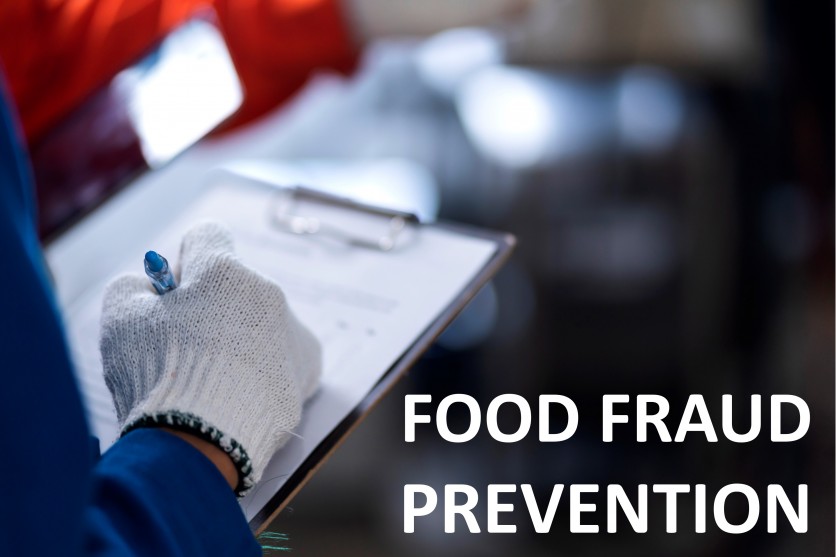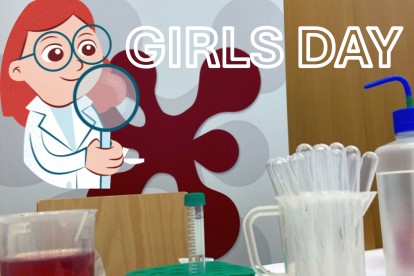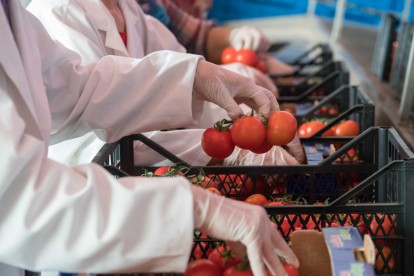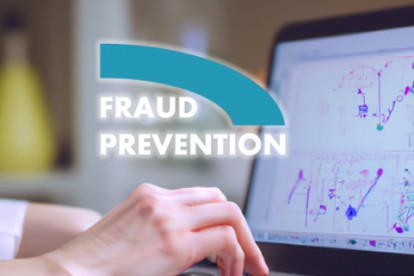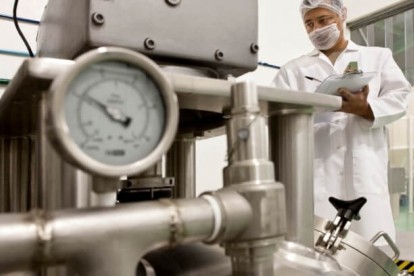Food authentication solutions as a tool in the food fraud risk mitigation plan
A comparative presentation of the records per quarter helps to identify trends from actual detection of fraud incidents in our laboratories. 2024 started with increased rates of detected fraudulent cases (12,7%), with a decreasing trend during the following two quarters of the year. The remarkably low rate in Q3 (5,4%) was followed by double rate in Q4 (11,9%). The respective figures per product group elucidate areas of higher risk. Flavors suffered from high rates of fraud for the first half of the year, retaining high number of detected non-conformities. Spikes appear for dairy/cheese in Q1 (extreme) and Q2, and spices in Q3. Last but not least, consistently high rates of fraud are recorded in honey/ syrup/ sugar and fruits & vegetables categories, highlighting the high vulnerability of these sectors currently.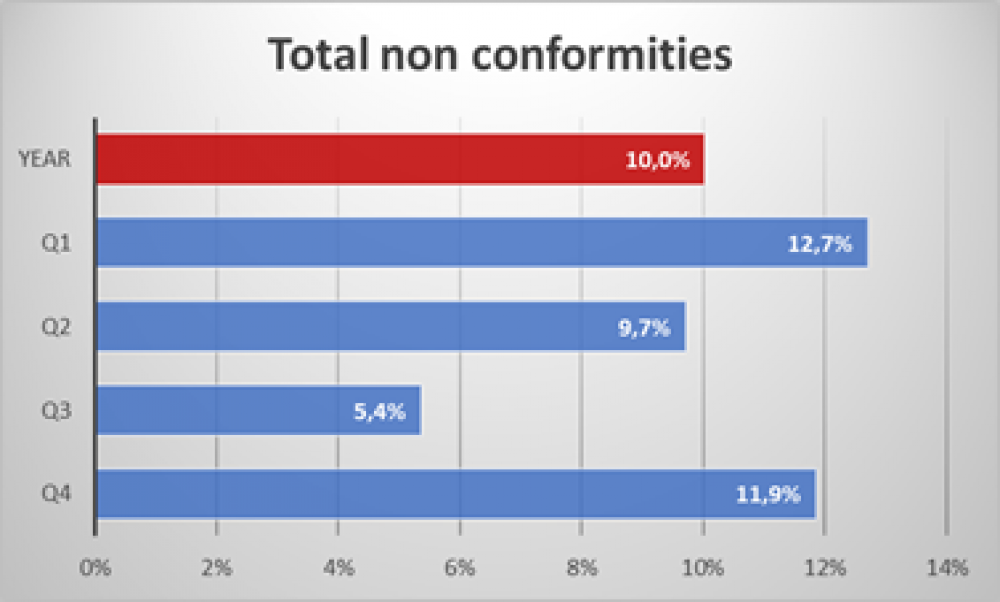
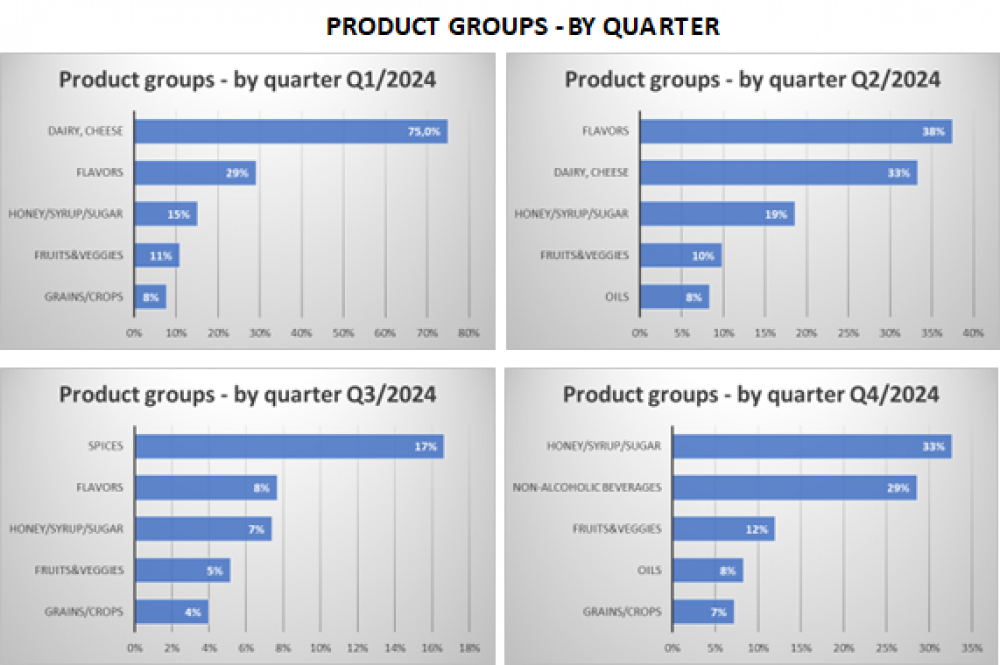
2024 TOTALS - BY FRAUD TYPE
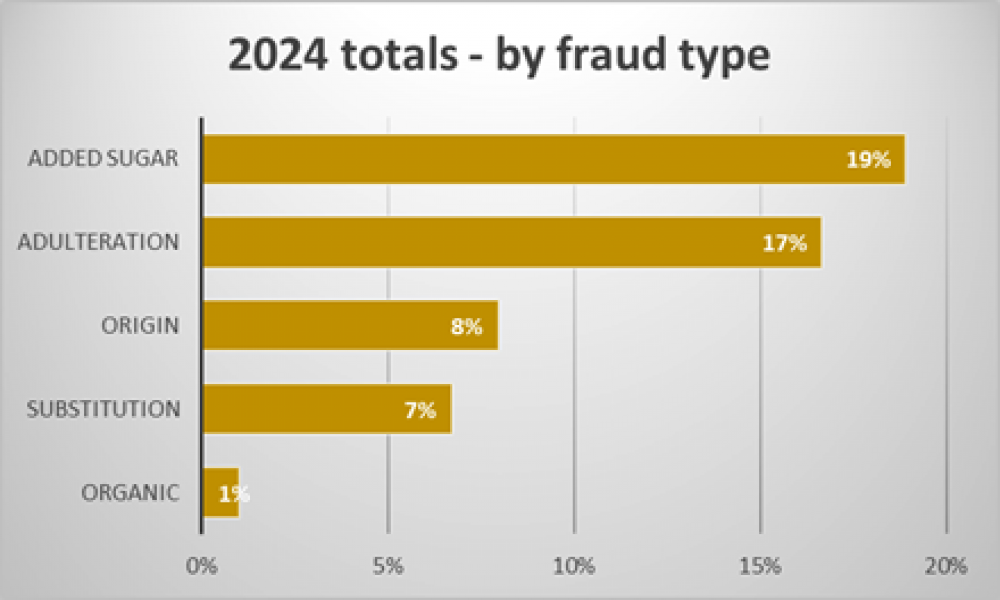
During 2024, the total annual frequencies of non-conformities indicated that non-declared added sugar (in multiple product groups) was the most common fraud type, closely followed by adulteration (water dilution, ethanol addition, enrichment with synthetic substances etc), geographical origin mislabeling and substitution (mixed species, botanical origin).
2024 TOTALS - BY PRODUCT GROUP
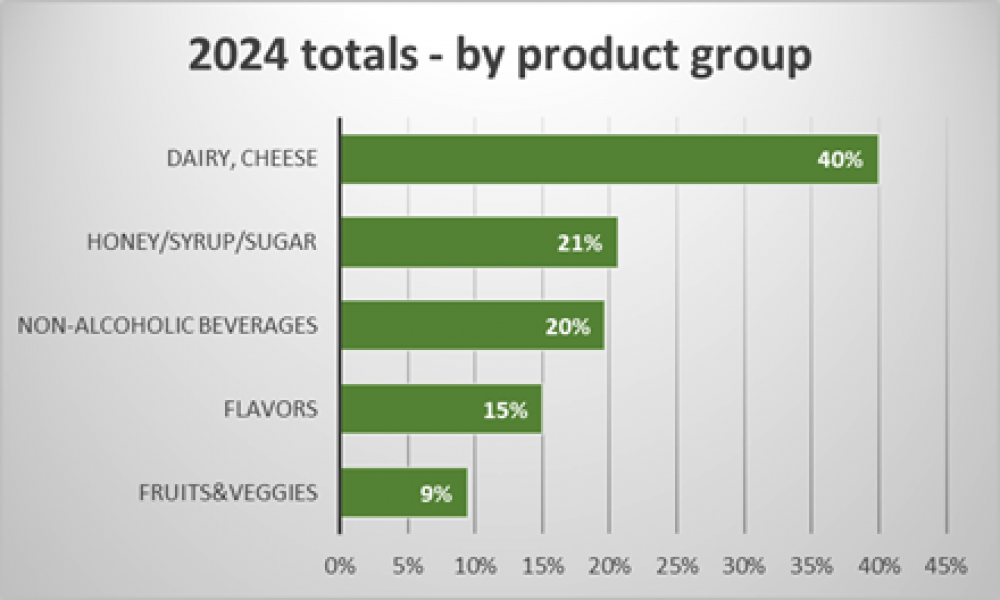
Dairy/cheese was the most victimized sector for 2024, mainly due to the devastating rate of non-conformities in Q1 and Q2 (focus: provenance of PDO cheese). Honey/ syrup/sugar and non-alcoholic beverages were affected by high rates of non-conformities all along the year (focus: added sugar). These groups reflect current risks in global supply chains. Flavors and fruits&veggies were steadily ranked high during 2024 as victims of fraud, a worrying finding due to the high number of test subjects in these categories in 2024.
Data source: Imprint Analytics GmbH
Note: the records and figures from laboratory findings are a direct reflection of trends and real-time conditions. Nevertheless, they can be biased by different factors, such as types of submitted samples or relative risk in certain samples regarding adulteration probability.
Success Story - Bohemia Sekt
BOHEMIA SEKT s.r.o. und Imprint Analytics GmbH arbeiten zusammen, um Authentizität und Qualität bei der Sektherstellung zu gewährleisten
Success Story - Lidl Österreich
Lidl Österreich und Imprint Analytics GmbH kooperieren zur Sicherung der regionalen Produktion und zur Sicherstellung der Integrität in nationalen Lieferketten
Mini Girls Day 2024
Unser Stand begeisterte junge Wissenschaftlerinnen ...
Navigating the Landscape of Food Authenticity in Agriculture
Brandneuer Expertenartikel zum Thema Lebensmittelauthentizität!
Food Fraud Records 2023
Lösungen zur Lebensmittelauthentifizierung als Instrument zur Risikominderung bei Lebensmittelbetrug
Food Safety Briefing mit David Psomiadis noch on demand verfügbar
Inmitten einer wachsenden Flut von Lebensmittelbetrug wird das Streben nach Authentizität und Transparenz wichtiger denn je. Während die Lebensmittelunternehmen sich zwischen neuen Vorschriften zu Nachhaltigkeit, ESG und verantwortungsvoller Beschaffung zurechtfinden müssen, steigen die Ansprüche und Erwartungen der Verbraucher. Lasst uns die Geheimnisse auf unseren Tellern lüften und eine Kultur des authentischen Essens kultivieren.

